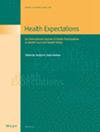Developing STEP-SE: A Qualitative Usability Study of a Novel Patient-Reported Outcomes Tool for Managing Side Effects in Shared Decision-Making for Schizophrenia Spectrum Disorder Care
Abstract
Background
Schizophrenia treatment with antipsychotics often results in side effects that impact adherence and quality of life. Managing these effects remains challenging, as it requires balancing efficacy and tolerability. The Schizophrenia Technological Evaluation of Patient Side Effects (STEP-SE) app aims to aid side effects monitoring and management through shared decision-making (SDM).
Aim
This study aimed to evaluate the usability of the STEP-SE app for patients and clinicians in managing antipsychotic side effects.
Methods
Sixteen stable outpatients and 14 psychiatrists participated in semi-structured interviews after using the STEP-SE app. Questions explored ease of use, information clarity, user needs fulfilment, patient–clinician collaboration, treatment adherence improvement, patient empowerment and clinical utility. Data were analysed thematically.
Results
Overall satisfaction with STEP-SE was high. Both groups found that the tool improved patient involvement, provided reliable information to enhance therapeutic alliance, posed low risks of misunderstanding and had an intuitive interface. Patients felt more motivated and empowered. Clinicians appreciated guideline consistency. Preferences differed regarding data visualization formats.
Discussion
STEP-SE shows potential for aiding SDM on antipsychotic side effects. Patients gained motivation, and clinicians felt reassured. Refinements around mobile access, graphics and features could augment utility. Generalizability is limited given the stable patient sample.
Conclusion
Preliminary findings suggest that STEP-SE effectively engages patients, empowers them and supports clinicians in collaborative side effect management. Further testing with diverse user groups is warranted.
Patient or Public Contribution
The current study was designed to gather patient and public feedback for the development of our decision aid tool, STEP-SE. Participants interacted with the tool's prototype in interactive sessions, providing insights and identifying technical issues. Their feedback was crucial for enhancing the tool, with each suggestion and bug report carefully considered for future iterations. The participants’ contributions were key in optimizing STEP-SE's features and ensuring its relevance and reliability. We thank all who shared their time and perspectives, significantly shaping the tool's user-centred design.

 求助内容:
求助内容: 应助结果提醒方式:
应助结果提醒方式:


